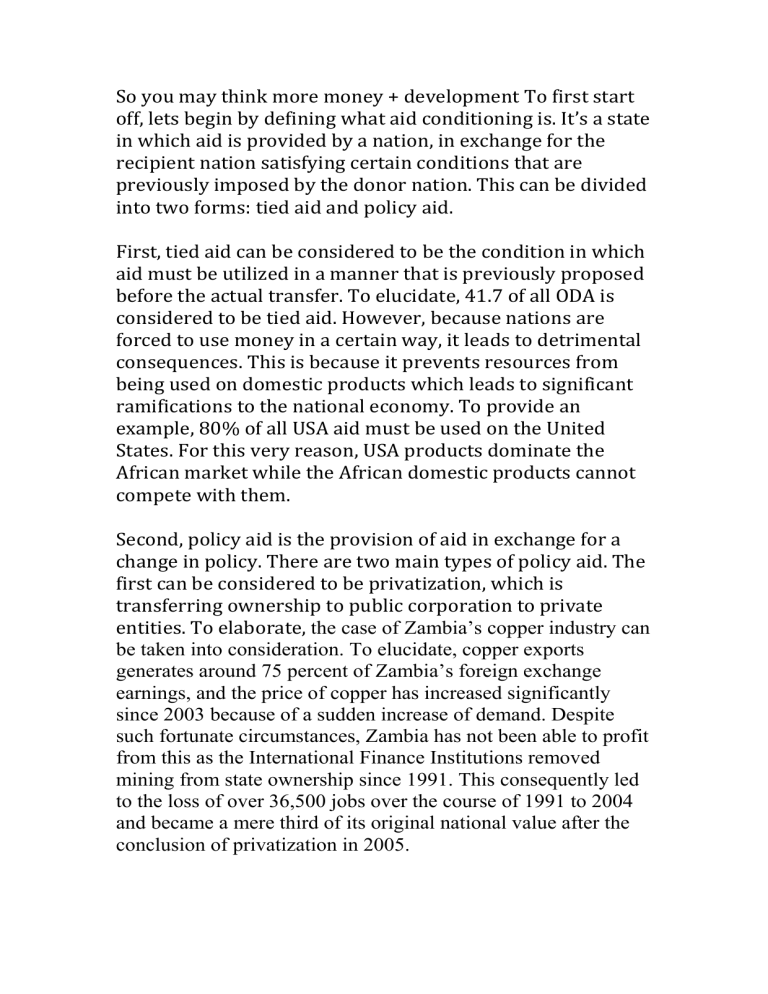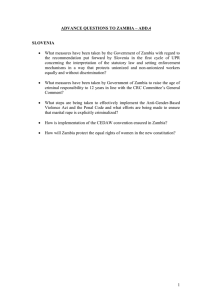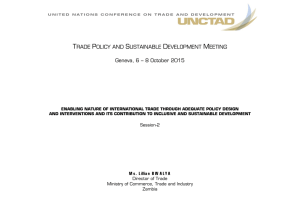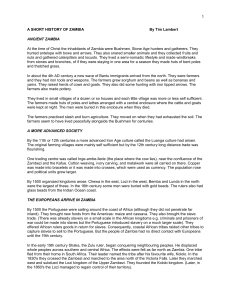
So you may think more money + development To first start off, lets begin by defining what aid conditioning is. It’s a state in which aid is provided by a nation, in exchange for the recipient nation satisfying certain conditions that are previously imposed by the donor nation. This can be divided into two forms: tied aid and policy aid. First, tied aid can be considered to be the condition in which aid must be utilized in a manner that is previously proposed before the actual transfer. To elucidate, 41.7 of all ODA is considered to be tied aid. However, because nations are forced to use money in a certain way, it leads to detrimental consequences. This is because it prevents resources from being used on domestic products which leads to significant ramifications to the national economy. To provide an example, 80% of all USA aid must be used on the United States. For this very reason, USA products dominate the African market while the African domestic products cannot compete with them. Second, policy aid is the provision of aid in exchange for a change in policy. There are two main types of policy aid. The first can be considered to be privatization, which is transferring ownership to public corporation to private entities. To elaborate, the case of Zambia’s copper industry can be taken into consideration. To elucidate, copper exports generates around 75 percent of Zambia’s foreign exchange earnings, and the price of copper has increased significantly since 2003 because of a sudden increase of demand. Despite such fortunate circumstances, Zambia has not been able to profit from this as the International Finance Institutions removed mining from state ownership since 1991. This consequently led to the loss of over 36,500 jobs over the course of 1991 to 2004 and became a mere third of its original national value after the conclusion of privatization in 2005. Another form of policy aid is tax alternation, which is the change of tax rates in exchange for the provision of aid. To recap on the importance of having such levies, taxes are what allow for domestic goods of a least developed country to stay competitive with the large supply of foreign goods of developing or developed countries. Thus, once taxes are changed, it is possible that it will lead to the devaluation of the domestic economy. This can be depicted in the example of Kenya’s cotton industry after the reduction of taxes and the opening of the domestic market to foreign industries. Consequent to this occurrence, cheap material from Europe and Asia flooded the markets, allowing the citizens to buy clothing at a cheaper price in the short term but completely devastating the economy in the long term. As a result, the overall worth of the cotton industry became only 5 percent of its original value after the end of the 1990’s, less than twenty years after the deduction of taxes. Indeed, policy aid can be truly detrimental. Add biblio Remove senegal Remove hypothesis page Picture switch Everyone reduce by around 30 seconds.




